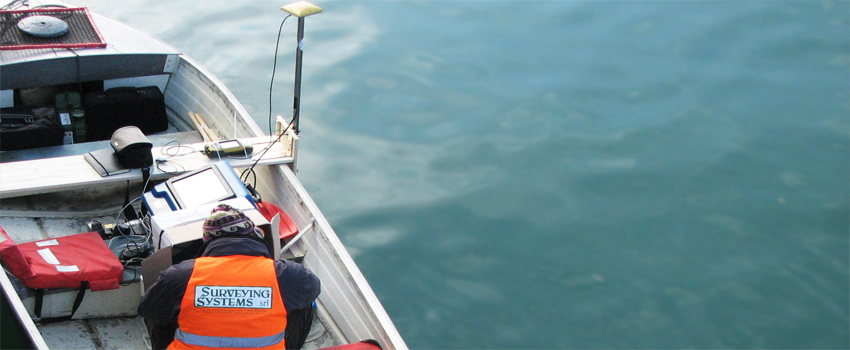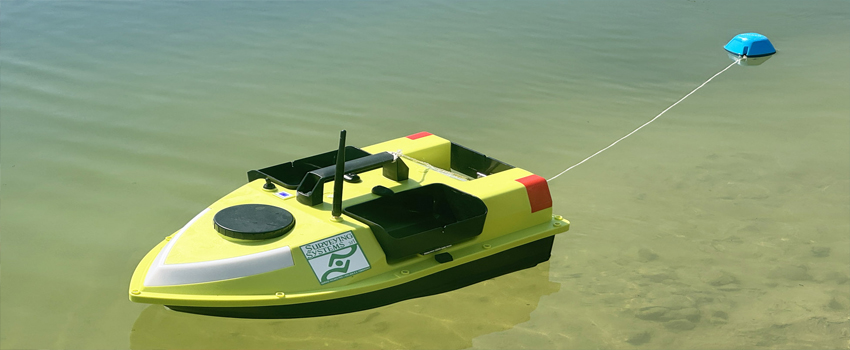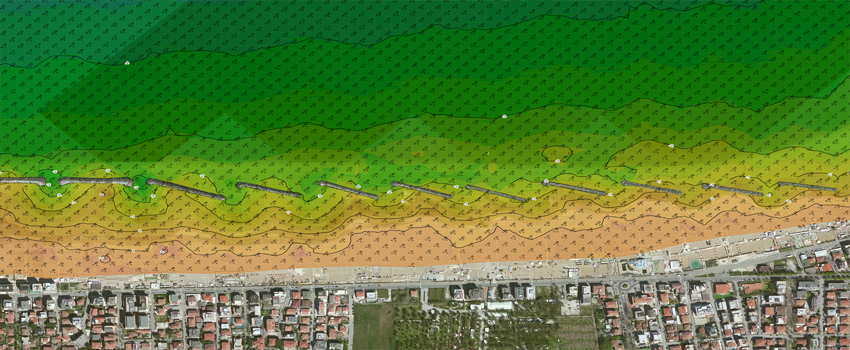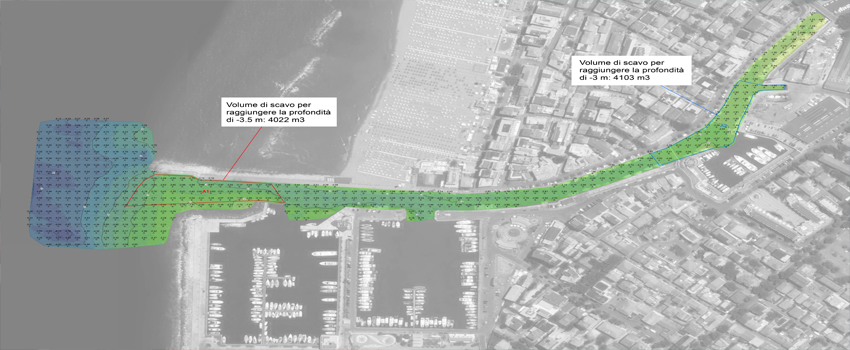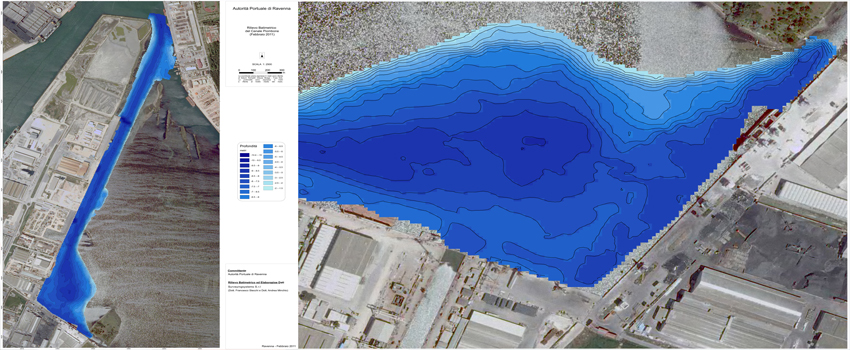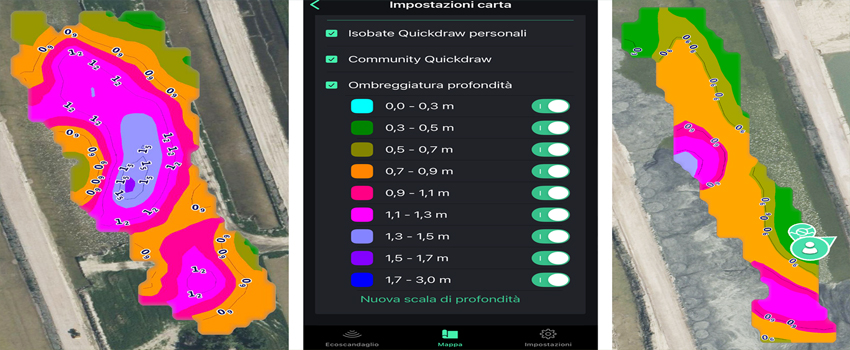Bathymetric surveys fall under the general category of hydrographic surveys and are performed whenever precise information on sea-bed morphology is required; therefore such surveys are preliminary to the construction of maritime and river works and, in the case of existing works, are essential to continuously verifying water heads and dredging volumes.
They also play a fundamental role in monitoring the evolution of beaches and coastlines, in particular to quantify erosion or verify the effects of beach nourishment.
Single beam
Bathymetric surveys performed with a single-beam echo sounder measure individual depth points following navigation lines that have been set according to the project and generally placed at right angles to the coast or to the axis of rivers and canals.
Such surveys are generally performed when the sea is completely calm and under wind-free conditions. The echo sounding sections are crossed by small, low draft boats travelling at a steady, slow speed along the predetermined routes.
For bathymetric surveys, an automatic digital data acquisition system is used, with real time GPS vessel positioning, RTK or NRTK, in differential mode. The on-board GPS transmits — in real time and at very high frequencies — the coordinates (East, North and elevation) to the navigation software that synchronizes them with the depth data recorded by the echo sounder.
Multi beam
Multi-beam technology is highly sophisticated, able to provide extremely detailed, high precision sea-bed surveys. This instrumentation can be used to perform continuous acquisition of the sea-bed through simultaneous use of a large number of acoustic beams, covering a side band of the sea-bed equal to about three times the depth investigated.
Resolution is very high and can even identify small sea-bed structures or monitor the state of docks, piers and cliffs. Besides making it possible to develop surveys more quickly, this type of acquisition provides precise information on real sea-bed morphology through direct measurement and not by interpolation (as is the case with data produced by Single beam technology) 




